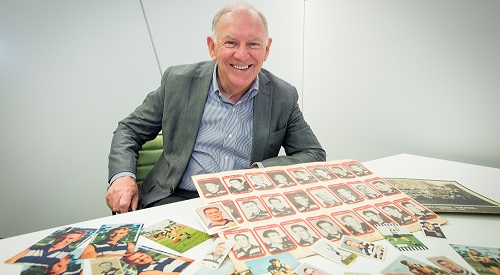Deakin researcher finds history lesson in Cats footy card collection
Media release
A Deakin University researcher is looking at how much our footy card obsession, particularly cards involving the Geelong Football Club, can tell us about our local history.
Dr John Rose, a 40-year member of the Cats, says his project will look at the history of Geelong from the perspective of cartophily, or the collection of trading cards.
"Trading and cigarette cards have a long and rich history, dating back to the early 1900s, and Geelong Football Club cards can tell us a lot about the social influences of the time," Dr Rose said.
"The first cigarette cards were produced before photographs of footballers appeared in newspapers so they helped establish the celebrity status of certain players. I'm looking at who produced these cards and why they chose the handful of players in each set.
"My research is also helping build an understanding of how card collecting reflected or impacted contemporary trends.
"For example, card collecting was once regarded with suspicion by people who believed it led to anti-social behaviour. Young boys would loiter around cigarette shops asking men for their cards as they left the shop or the boys would steal money for cards or break into shops.
"The cards also encouraged gambling and a report in the Geelong Advertiser in August, 1909, urged police to intervene in the card gambling games in Geelong West as schoolboys were obstructing the footpath."
After a 55-year career in teaching, Dr Rose said this research for his Masters thesis had combined his love of history and the Geelong Football Club into one project.
In addition to completing a database of every Geelong player who has appeared on a cigarette or trading card, his research will look more broadly at the history of cigarette and trading cards in Australia, the US and UK and how their format, production and distribution have changed over time.
"When tobacco companies first started producing cigarette cards, they featured actresses and bathing beauties to appeal to male smokers," Dr Rose said.
"But around 1907, companies began targeting women, producing silk cards to encourage women to take up smoking and to try and influence men in their choice of cigarette brands."

